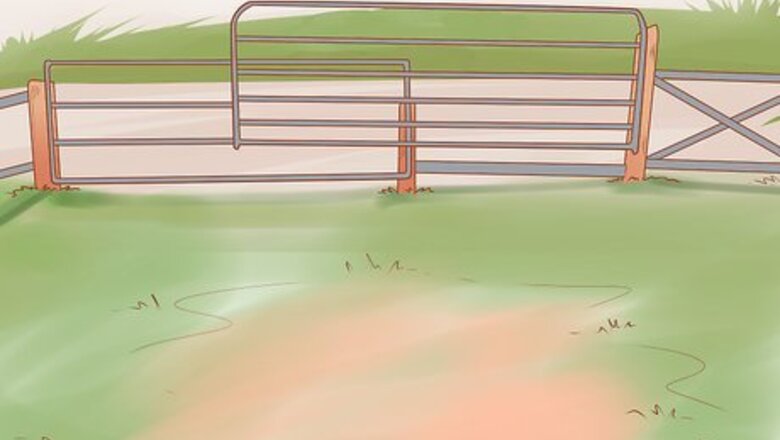
views
Providing Shelter and Entertainment
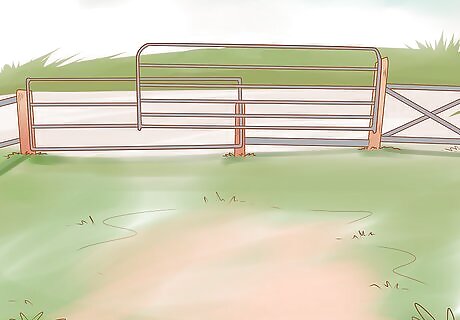
Determine how much shelter you need. To make this determination, consider the weather in your area. If you live in a mostly temperate climate, your goats may not need as substantial a shelter as other places. At bare minimum, you should provide a 3-sided structure that offers shelter from the sun and wind. However, if you're in an area that has severe winters, you'll need a full-on barn to protect your animals, though it can be a small one. You just need to provide protection from the elements.
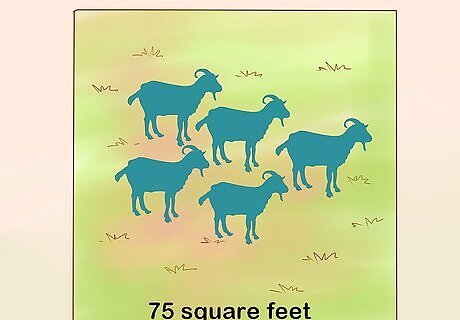
Consider the size of your herd. The size of your shelter is determined by the size of your herd. In general, you need to provide 15 to 20 square feet for each goat you have. So if you only have one goat, your shelter should be 15 to 20 square feet (1.4-1.9 sq. m). In practice, that's a 3-by-5-foot (0.9-by-1.5 m) shelter or a 4-by-5-foot (1.2-by-1.5 m) shelter. If you have 5 goats, you'll need 75 square feet (7 sq. m) to 100 square feet (9.3 sq. m), which translates to approximately an 8-by-9-foot (2.4-by-2.7 m) shelter or a 10-by-10-foot (3-by-3 m) shelter. In fact, you can use a large dog house for a pygmy goat if you are keeping it in your backyard.
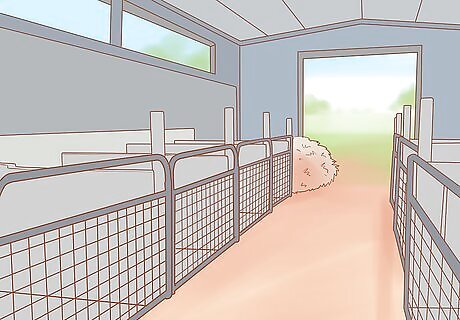
Create stalls. If you have multiple animals, create multiple stalls so each goat has his or her own space. The ideal floor for goats is gravel with clay on top of it. It's easy to clean out, and you can apply another layer every couple of years. Hay is sufficient for bedding, and goats generally won't eat what's on the floor. Also, you'll need troughs of some sort to feed the goats in.
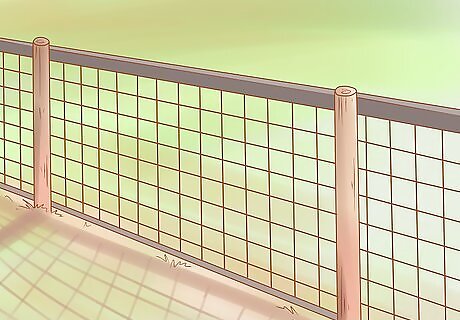
Install a fence. The best fencing for pygmy goats is wire fence. To keep your pygmy goats from jumping over, the fence needs to be at least 4 feet (1.2 m) high.
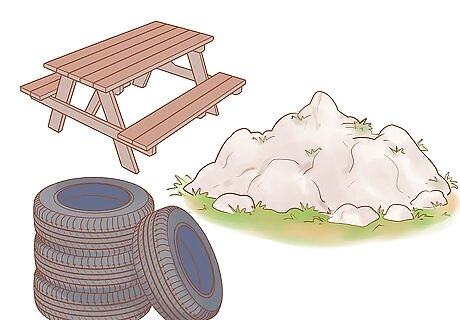
Include climbing areas. Goats love to climb, so you'll need to include some places for them to do so. For instance, any kind of picnic table is ideal for this pastime. You can even just create hills out of dirt, as goats will find that just as enjoyable. They also like to jump on and off these places. Old tires also make good toys for your pets.
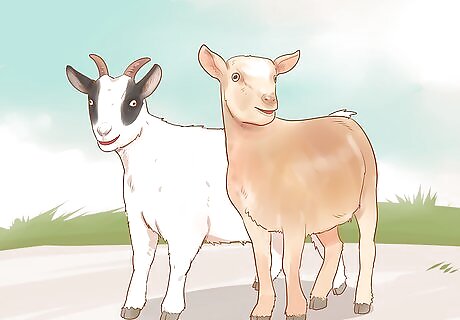
Buy at least 2 goats. Goats are meant to be in a herd, so you should keep more than one. They prefer to live in a social group.
Feeding the Correct Diet
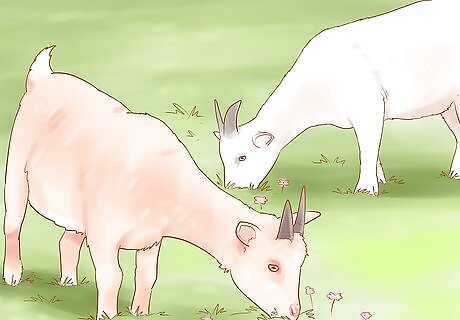
Allow your goat to graze. Goats can eat grass, brush, and forbs, though they will eat the last 2 over grasses. Forbs are weeds such as dandelions and clovers. In the summer, goats may be able to subsist solely on pasture if you have enough land. You will need about 1/4 of an acre (1101.7 sq. m) of land per goat. If you have a herd of goats, you will need several pastures to keep up with your goats' demand. Also, you want rotate where your goats feed so that plants have time to grow back.

Try alfalfa hay. If you don't have a sufficient pasture for your goat or goats, you can feed them alfalfa hay in place of grazing. Each goat will need about a pound or 2 (0.5-0.9 kg) of feed per day. However, if they are also getting grains, they will need less.
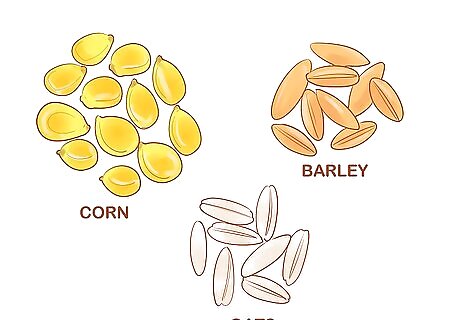
Supplement their diet with grains. In the winter, goats will need more feed. Also, young goats and goats that are providing a substantial amount of milk will need a supplemental diet of grains even in summer. Appropriate grains include corn, barley, and oats.
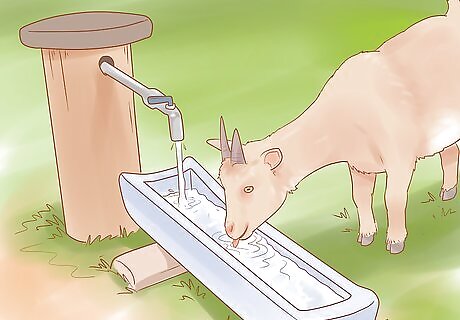
Provide a plentiful supply of water. Like all animals, goats need water to live. However, water is especially important to goats, as they are ruminants, meaning it takes more water for them to process their food than other animals. Always ensure they have access to clean, fresh water on a regular basis. Make sure to clean out the container you use fairly regularly and to change the water often.
Maintaining the Goats' Health
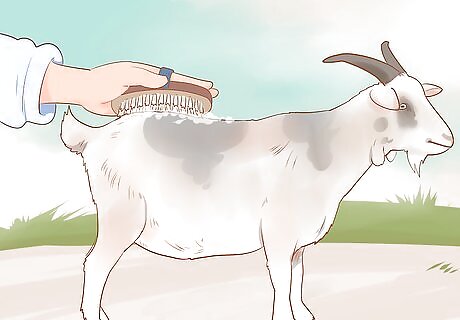
Brush your goat once a day. Use a sturdier brush to get rid of the more obvious dirt on your goat. Next, use a soft brush (curry comb) to comb through your goat's hair. Also, feel for bumps on your goat as you brush, as those could indicate infections or a cut or scratch. Your goat will not likely need clipping unless you plan to show her.

Bathe your goats only if they get parasites. Most of the time, brushing will be sufficient for your goat. To bathe the goat, slightly warm up the water so it's not cold. Lather the goat up with a shampoo meant for animals or specifically for goats. Use a washing mitt to help along the process. Rinse off the soap. It makes it easier if your goat has a collar on because it is easier for you to hold on to her.

Provide vitamin A. Pygmy goats need vitamin A in their diets to keep up their health. Mostly, they can get this vitamin from green hay or from grazing. However, if you are not supplying either of these, try adding some corn to their diet.
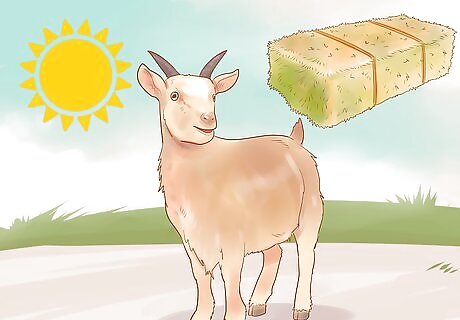
Include vitamin D. Just like in humans, vitamin D helps goats absorb calcium, which maintains bone health. If your goats are outside most of the time, they will absorb vitamin D from the sun. However, if they don't get much sunlight, feed them either sun-cured hay (not heat-cured) or irradiated yeast.
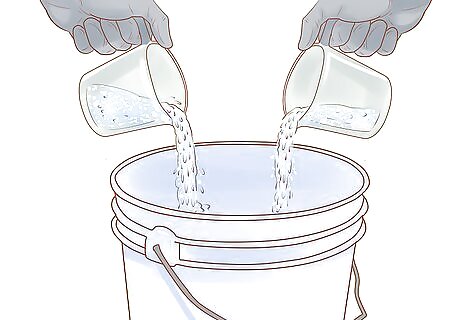
Add minerals for pasture-fed goats. If your goats are exclusively pasture-fed (rather than alfalfa- and grain-fed), you should add a mix of iodized salt, limestone (ground), and animal bones (steamed and ground). Essentially, you can put this mixture out in its own bucket and let the goats eat it as needed.
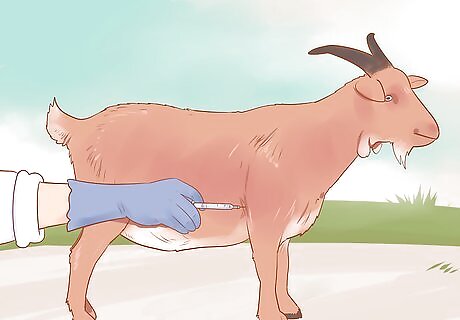
Inject selenium. Selenium is an essential nutrient, but it is especially important if white muscle disease is prevalent in your area, as selenium protects against this disease. When kids are born, you should provide a supplement of this nutrient by needle. This disease calcifies the muscles, making them whitish, which is where the disease gets its name.
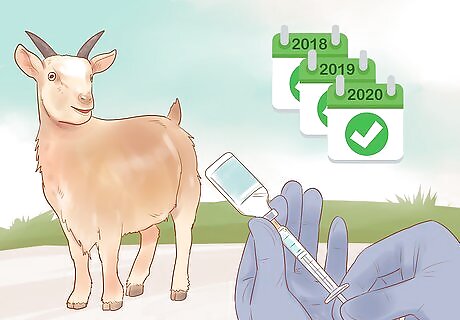
Give vaccinations yearly. Your goat will need to be vaccinated against enterotoxemia and tetanus, at the very least. You can usually buy these at local feed stores and give them yourself. You may also want to ask your vet about rabies shots. You may also want a clostridium CD vaccination.
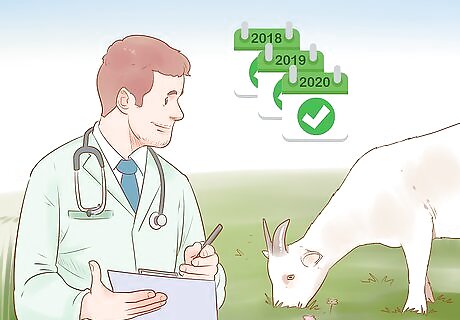
Schedule a yearly checkup. To keep your goat in good health, it's best to schedule a yearly checkup. That way, you can ensure your goat has the proper vaccinations, and you know your goat is in good health.
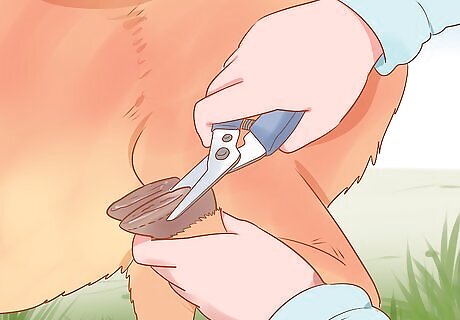
Trim your goats' hooves. Your goats hooves will grow over time, and if they aren't trimmed, you could end up with goats who can't walk well. To trim them, use gloves, hoof shears, and a hoof knife. Tie or hold the goat. You will need to have someone hold the goat in place while you trim its hooves. Look for the growth rings. You should be able to see where the hooves have grown. Trim back the hooves until they are even with the last growth ring.


















Comments
0 comment